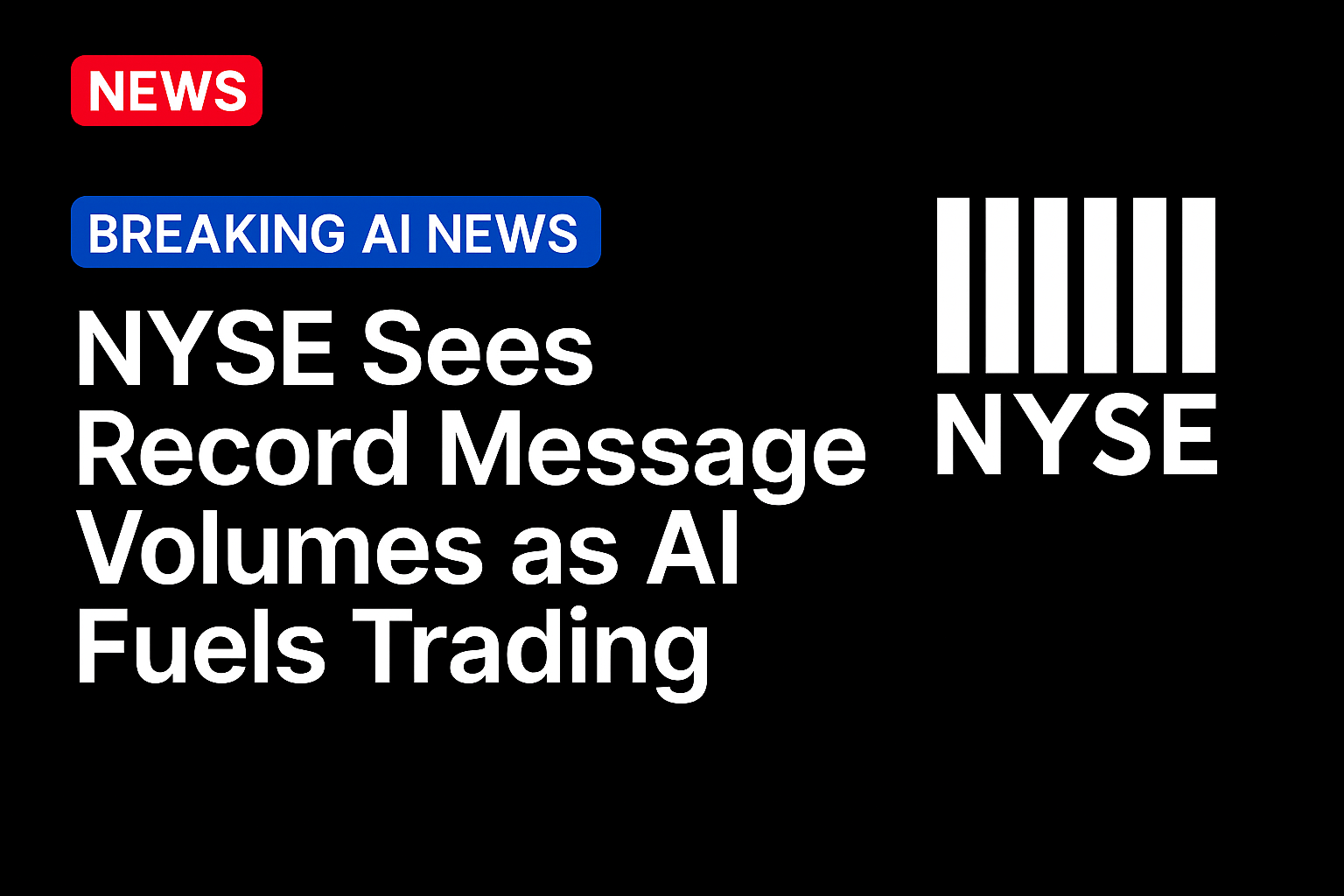
Daily trading activity on Wall Street has reached unprecedented levels, with the New York Stock Exchange now processing about 1.2 trillion order messages each day, according to exchange President Lynn Martin. That is nearly three times the volume seen during a volatile trading day four years ago.
Each message represents a single instruction to buy, sell, cancel or modify an order. Martin said the sharp rise reflects how artificial intelligence (AI) and algorithmic systems are redefining the pace and structure of U.S. financial markets.
“When I first took this job four years ago, COVID was still rearing its head, and a volatile day in our market saw about 350 billion incoming order messages,” she told Fortune. “This past April, a peak day for us was 1.2 trillion messages.” Martin attributed the surge to “AI-fueled trading, algorithmic strategies and hyper-speed market participants.”
Algorithmic trading has existed for decades, but recent advances in machine learning have made these systems more adaptive, able to learn from new data rather than follow fixed rules. As research from the Hong Kong University of Science and Technology notes, AI-driven algorithms can now analyze market patterns, adjust pricing, and execute trades within milliseconds. This shift has multiplied the amount of trading-related data flowing through exchanges like the NYSE as automated systems compete to update and manage orders in real time.
Martin said the scale and speed of trading activity have made human oversight alone impossible. “It’s our obligation to protect the financial markets, so we have to watch those messages,” she said. “We can’t do that with a bunch of humans. We need good technology.” Artificial intelligence is now central to the NYSE’s surveillance systems, helping the exchange monitor trades and detect irregular behavior in real time.
In an interview with CNBC, Martin said the NYSE’s systems are now handling record traffic more efficiently than they did during the market turmoil of 2020. She said infrastructure upgrades and the use of AI-based monitoring tools have allowed the exchange to manage higher trading volumes without major disruptions.
Records in Market Activity
The NYSE Research, described how a volatile week in April illustrated the scale of modern trading. “The five trading days between April 3 and April 9 marked a period of unprecedented volatility in U.S. equity markets. All five trading days landed in the top ten highest volume days in history, including three distinct record-setting days capped by a record 30.98 billion shares on April 9 as the S&P 500 rallied 9.5 percent. The NYSE Group handled over 1 trillion messages on multiple days, a new all-time high.”
Despite the record activity, the NYSE said its market structure helped maintain stability. Trading halts, which temporarily stop buying and selling when prices move sharply, occurred 25 times on the NYSE compared with 334 on a competing exchange. The exchange credited its hybrid model, which combines automated order matching with oversight by human market professionals known as Designated Market Makers, for helping stabilize prices and maintain liquidity during rapid market movements.
Technology, Oversight and Systemic Risks
To handle the growing message flow, the NYSE operates a purpose-built data center and private network that are disconnected from the public internet. Martin said this design improves both performance and cybersecurity. “We take cyber super seriously,” she told Fortune. “On our most critical infrastructure, we have full visibility of the system, and therefore we can protect that infrastructure.”
The exchange’s parent company, Intercontinental Exchange, or ICE, has expanded its data-processing systems using Snowflake’s Data Cloud. ICE said the move reduced data costs by about 50% and improved reporting speeds by 80%. The system processes detailed, time-stamped trade data that supports compliance and oversight.
The International Monetary Fund (IMF) has described similar trends across global markets, noting that “AI-driven trading could lead to faster and more efficient markets, but also higher trading volumes and greater volatility in times of stress.”
The IMF said that as AI becomes more widely used, “markets could become opaque, harder to monitor, and more vulnerable to cyber-attacks and manipulation risks.” It also reported that the share of AI-related patents in algorithmic trading has grown rapidly, underscoring how deeply machine learning is being integrated into financial systems.
The IMF warned that because many AI systems act on similar data and signals, they can respond in the same way during market stress, which could amplify volatility. It observed that while AI can deepen liquidity and improve efficiency in stable conditions, it may also heighten systemic risk when multiple trading systems react simultaneously.
Martin said the NYSE’s goal is to ensure stability even as trading volumes and speeds continue to rise. She said the exchange’s hybrid structure, private network, and AI-based monitoring systems have made it more resilient than during previous periods of volatility.
Source: https://www.pymnts.com/




